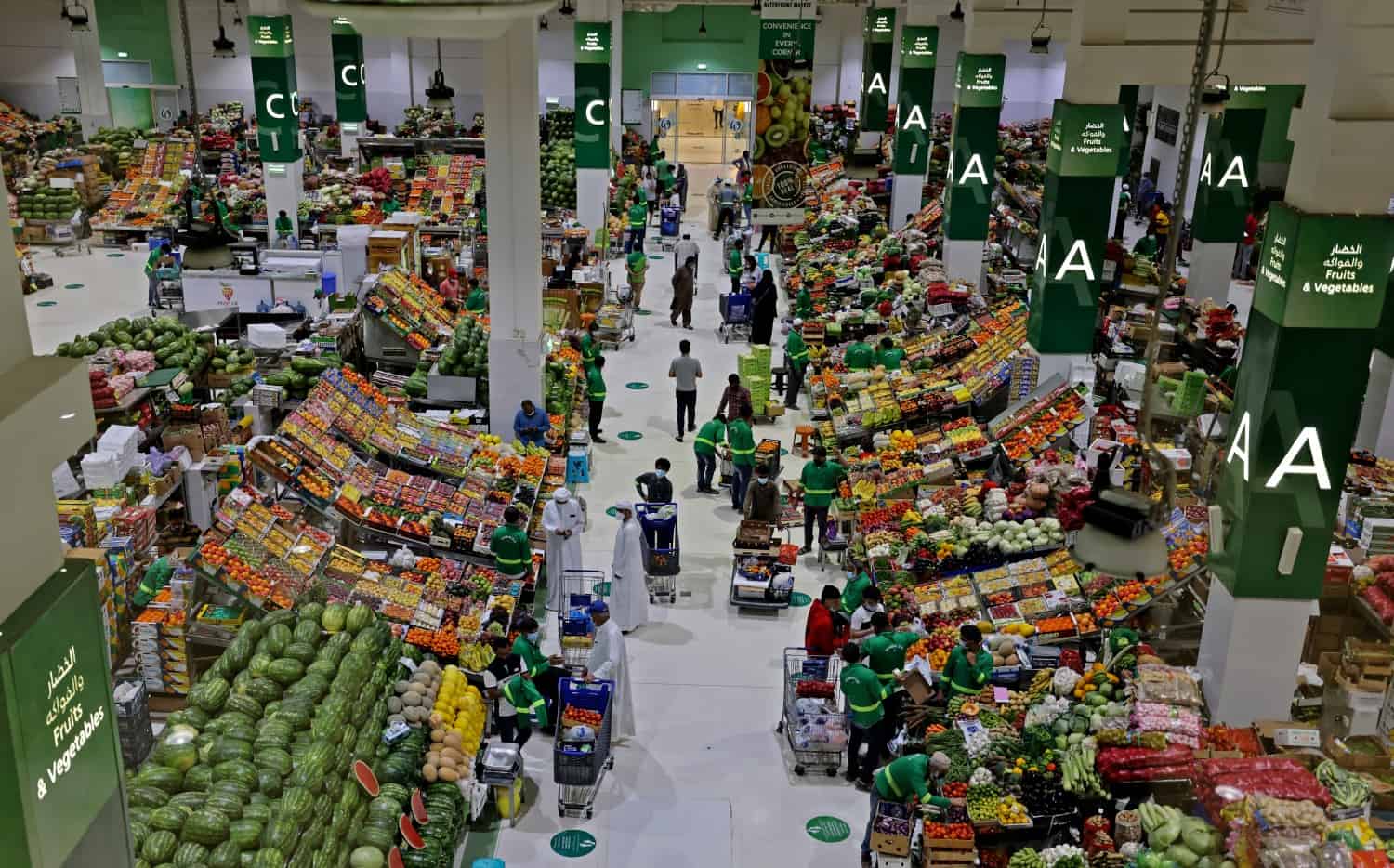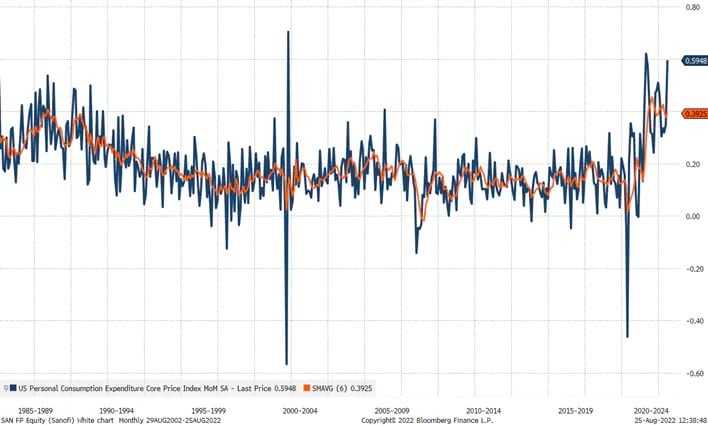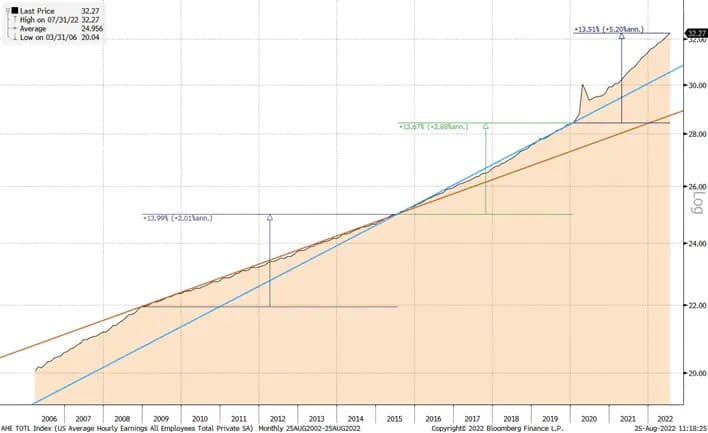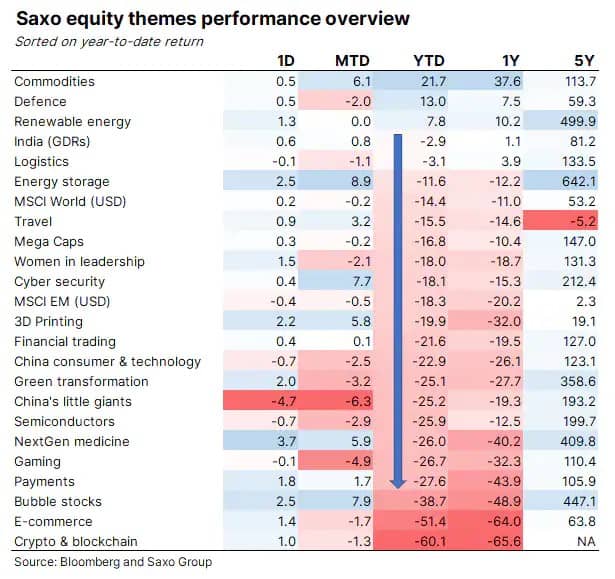Central banks have been very late to the inflation game as they have underestimated the effects of the stimulus during the pandemic. Supply chains and generally the supply side of the economy were expected to normalise much faster than what has been the case and our main thesis now is that if central banks focus too much on core inflation a big mistake might be the outcome. Food and energy will be at the center of our crisis years with climate change and the green transformation being inflationary in the years to come. Investors should increasingly invest in the tangible world to offset these inflationary risks.
The energy crisis will drive everything
Around 30 central banks around the world have adopted inflation targeting using the headline inflation indices which in the US is the US Personal Consumption Expenditures Index and was officially announced in January 2012. The official targeting is the headline inflation indices, but many central banks and economists are often putting more weight on the core inflation indices. These indices remove energy and food from the price index. This practice is likely what made central banks react slowly to the current inflation impulse; remember, at Jackson Hole one year ago Jerome Powell said: “We have much ground to cover to reach maximum employment, and time will tell whether we have reached 2% inflation on a sustainable basis”. At that point, US CPI and core CPI stood at 5.4% y/y and 4.3% y/y respectively.
Core inflation indices remove the energy and food items because they are seen as volatile and mainly not driven by the trend change in overall prices, and the key assumption is also that they have temporary factors behind them that will reverse later on (see quote below from Federal Reserve Bank of San Francisco). This argument was the same for our disrupted supply chains although, it has taken much longer than expected.
“However, although the prices of those goods may frequently increase or decrease at rapid rates, the price disturbances may not be related to a trend change in the economy’s overall price level. Instead, changes in food and energy prices often are more likely related to temporary factors that may reverse themselves later.”
Food and energy will add to inflation going forward
Our team has written a lot about the physical world and lately we introduced indices of tangibles- vs intangibles-driven industry groups. We have shown many times how the world is underinvested in the global energy and mining industry, and why this will haunt the world for years. Food and energy are also intertwined and connected which we have seen today with Yara International reducing its ammonia production in Europe to just 35% of potential production due to elevated natural gas prices. Lower ammonia production will lead to less fertilizer for farmers and thus lower food production, which again can lead to higher food prices.
It should be clear by now, that ignoring food and energy could be a grave mistake by central banks. Climate change will make global food production more volatile and push up prices, and the green transformation will for years keep energy prices elevated. Our main thesis is that the coming decade will in many ways be a replay of the 1970s as politicians will intervene in the economy to mitigate the pain from higher prices, but these decisions will only keep the nominal economy growing fast and thus keep inflation and the readjustments going for longer. The Fed’s core inflation measure is currently at 0.4% m/m measured over six months suggesting a core inflation rate annualized at around 5% which means that short-term interest rates must be set much higher to tame inflation. The headline inflation is currently twice as high as the core inflation.
Nominal wages will underpin inflation for a lot longer
In this ECB paper from August 2002, the authors conclude that central banks should give substantial weight to the growth in nominal wages when monitoring inflation. If we look at nominal wage growth in the US, the chart below shows the three-staged acceleration we have observed in the US economy since 2009. The first phase during 2009-2015 saw only 2% annualized wage growth as the economy was suffering from low demand in the subsequent years after the Great Financial Crisis. The second phase was the period from 2015 to early 2020 where years of loose monetary policy and slowly healing economies lifted US nominal wage growth to 2.9% annualized.
The third phase is the period from early 2020 until today and is driven by the extraordinary monetary and fiscal stimulus that was put in place after the global Covid pandemic broke out. The combined stimulus was on par with the post-WWII years and was unleashed into a global economy that in hindsight was much closer to a hard physical supply limit than understood at the time. Subsequently, demand has been running much stronger than trend growth, and as a result, nominal wages have accelerated to a 5.2% annualized growth rate. Indeed, it seems we have a serious problem on our hands where inflation become unanchored from 2%.
Invest in the tangible world
In an inflationary environment the tangible world must increase dramatically, so investors should invest in the tangible world to offset the inflation risk in order to preserve wealth in real terms. In our note from yesterday about the Tangible world is fighting back we highlight the industry groups that are part of the tangible world, but our theme basket performance overview also shows which tangible parts are doing well which this year has been commodities, defense, renewable energy, logistics, and energy storage. Saxo clients can find the companies in each of these theme baskets on our trading platforms.
Peter Garnry is the Head of Equity at Saxo Bank.
The opinions expressed are those of the author and may not reflect the editorial policy or an official position held by TRENDS.











